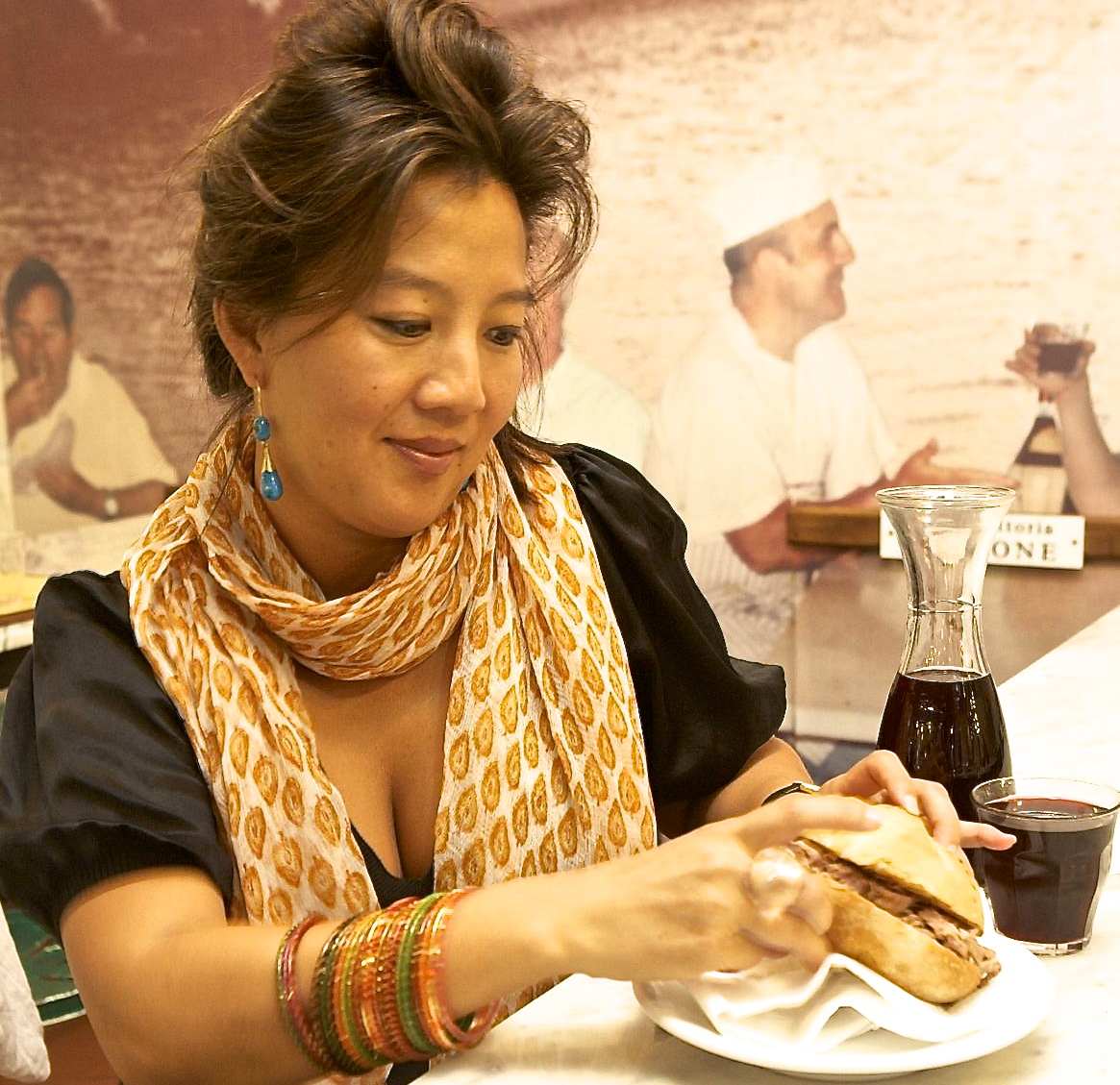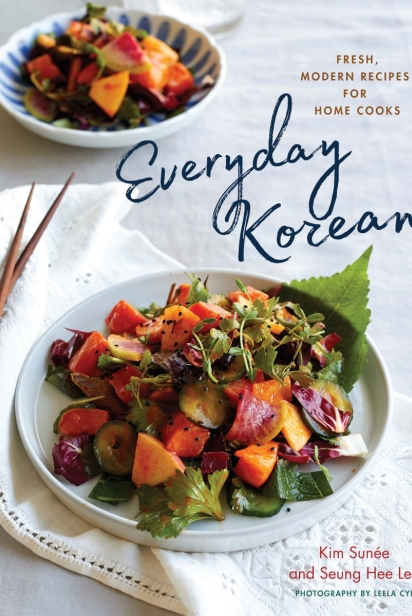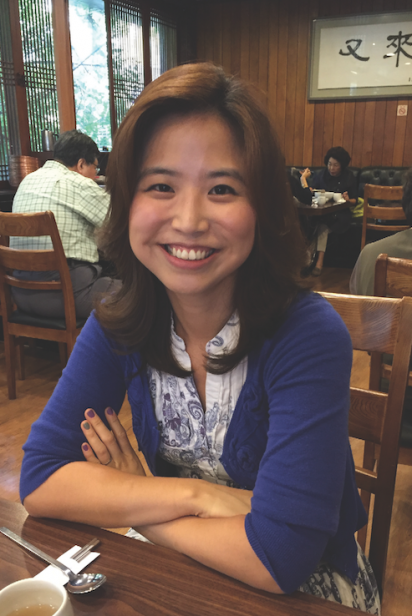DISH with Kim Sunée

Photo by Roberto Frankenberg
Through her column for the Alaska Dispatch News, writer Kim Sunée graces many Alaska kitchens with her recipes and words. The best-selling and world-traveling author is getting ready to release a new cookbook just in time for the holidays.
She told us about the book, the guilty pleasures in her grocery basket, and how you can get a signed copy of Everyday Korean: Fresh, Modern Recipes for Home Cooks.
This is your third book; your first was a memoir and your second was a cookbook. What made you want to write Everyday Korean: Fresh, Modern Recipes for Home Cooks?
In many ways, this book is a continuation of my first two in that I am always in search of flavors that ground and comfort and offer a sense of place, if not home. “Everyday Korean” is really an homage to a country and cuisine that I have always found intimidating but wanted to grasp and understand and learn to cook at home.
There’s so much of your personal story in your first two books. A Mouthful of Stars ends with a love poem. Can readers expect to see more of that intimacy and food romanticism they fell in love with or is there a new voice in Everyday Korean?
This is my first book with a co-author and although Seung Hee (my co-author) and I are like sisters, this is truly a celebration of the flavors of my birth country expertly guided by Seung Hee, a nutritionist and Korean food expert. In many ways, this is more about the food and somewhat less about the personal journey.


Speaking of Seung Hee Lee, can you describe what the process of creating this book together was like?
Seung Hee has such a true love and passion for food and wine, in general, and the food of her country in particular; co-authoring a book with her has been a powerful entry to the cuisine and culture of a place I never truly knew, having been adopted by Americans at the approximate age of three. The actual creation of the recipes was also fun—we had lots of banter about which ones to include and at least a year or so of pure testing and tasting to make sure they were just right.
This book focuses on “fresh, modern recipes,” but you include some traditional recipes in the book as well. Why did you decide to juxtapose the two?
You can’t really cook Korean (or other cuisines for that matter) without acknowledging the history and traditions, which in this case, go back centuries and are the base of and inform the more “fresh and modern” take on them. In all cultures, we have recipes passed down from generations but that continue to evolve due to many factors—availability of ingredients, taste preferences, etc. For anyone who might not be familiar with Korean cuisine, we wanted to ease them into the flavors by also offering something more familiar—like macaroni and cheese or flatbreads—but with a Korean flavor hit.
The term “fusion” is used as a blanket description for the mixing of cultures and cuisines. Following the original zeitgeist of the ‘90s, fusion became a bit of an F-word in the industry. How do you feel about it? Would you call your recipes, like kimchi-bacon mac and cheese, fusion foods?
Fusion cuisine definitely got a bad rap and rightly so in some cases; it’s confusing to the palate when you see something familiar that’s piled with disparate bams! of this and that. The idea behind fusion, combining more than one culinary tradition, is nothing new. We see it and eat it all the time—whether it’s a kimchi-topped taco or a Tex-Mex dish. When flavors from various culinary traditions are respected and then played with—I think it can work.
Say you’re at the grocery store. What’s the guilty pleasure item in your basket?
Sea salt Alaska Chip Company potato chips! Or ingredients to make roasted prosciutto-wrapped jalapeño poppers!
What's in your refrigerator right now?
Too much! I actually hate wasting food so whatever leftovers I don’t share with parting dinner guests end up in the fridge until they find new life in another dish. I made a huge pot of gumbo yesterday, so there’s that along with potato salad made with these gorgeous red spuds from Rempel Farms; local sour cherries that I canned in a simple syrup and have been doling out—into glasses of Bourbon or on top of oatmeal; Mont d’Or—my favorite winter cheese that a friend brought back from France and crème fraiche and good salted butter, always. Gochujang, the Korean red pepper paste we call for in many of the recipes in the book, and some homemade kimchi, something I learned to make thanks to this book. A big tub of rose harissa made with dried rose petals that’s spicy and floral. And lots of Champagne!
What kitchen utensil should every cook own?
Kitchen tongs are great. A good sharp chef’s knife. Kitchen shears—Koreans use them for cutting savory fritters and pizza, grilled meat, etc; I’ve come to appreciate them more.
Everyday Korean promises to unlock the arsenal of cooking techniques essential to Korean cuisine for home cooks. What's your advice to someone who thinks they can’t cook?
Pick a recipe that doesn’t look too intimidating and read through the recipe once or twice all the way through. As a former food editor, we used to get so many letters from readers about why a recipe failed—we often discovered that people don’t read through the entire recipe or they substitute way too much and then wonder why “it didn’t come out right.” Go for something simple to start and make it several times. Practice in the kitchen does make for perfect, or almost perfect. And I also tell home cooks not to try a new recipe for a dinner party. Make it once before actually serving it.
Have your own questions for Kim Sunée? You can meet her and get a signed copy of "Everyday Korean" at a special book signing event November 6, 2017 from 4:30 p.m. to 6:30 p.m. at the Bear Tooth Grill in Anchorage. The restaurant will feature specials inspired by the book through the month of November.
Jessica Stugelmayer is the senior digital content editor for Edible Alaska. She can be reached via email, Facebook, Twitter, and Instagram.
Some questions in this interview have been lightly edited for clarity.




